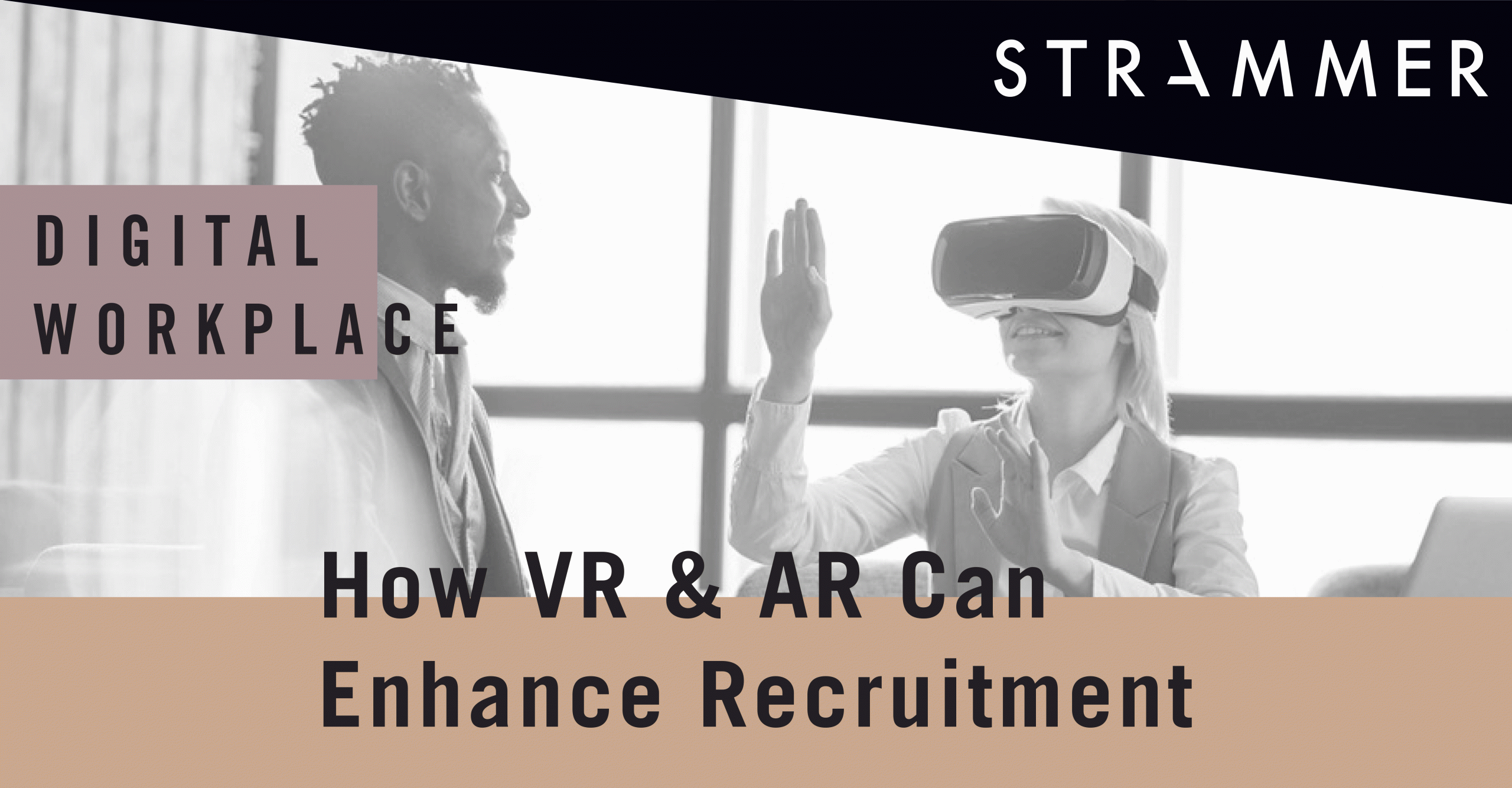The Possibilities of Extended Reality in Recruitment
Though most of us were first introduced to Virtual Reality (VR) and Augmented Reality (AR) as a technologies used in gaming, the potential uses are expanding immensely. Now, immersive technologies are being considered and tried across various industries in a diverse array of applications. In the field of recruitment, we are just beginning to see the possibilities.
VR and AR are both extended reality technologies, but VR completely immerses one within a digital environment whereas AR projects a digital overlay onto the real world. They could be used to improve recruitment by helping companies to attract and engage candidates, as well as facilitating potentially better hiring decisions.
VR and AR can be used as part of businesses’ outreach and acquisition strategy. For instance, at campus careers fairs companies can use AR overlays or VR headsets to allow students to experience the working environment. This would enable the student to gain a feel of the office and a better insight into life at the company than verbal descriptions alone can provide. As such, extended reality technology could allow candidates to better gauge their potential fit within a company, and companies can use them to make an impression and stand out against competitors.
In the assessment stage, companies can use VR to construct a simulated environment where candidates complete interactive tests. Such environments go beyond the limits of a traditional face-to-face interview as assessors can see how candidates react to unfamiliar situations and constructed scenarios in real-time. For instance, VR interviews could enable assessors to more assess certain skills such as learning agility and the ability to handle stress perhaps more reliably than could be obtained through standard assessment methods like behavioural questions or verbal/written situational judgment exercises. Thus, for certain roles extended reality technology could be used to make potentially more accurate and informed hiring choices.
In addition, extended reality can help to improve the candidate experience, which is important for a company’s talent management and reputation. The gamification aspect of immersive technologies renders them fun and enjoyable, likely resulting in a more memorable and positive assessment experience. Moreover, given that high-performing candidates could well have a choice of job offers in the end, leveraging these technologies to engage talented individuals could make the difference in convincing them to join the company over a competitor.
With time these technologies continue to develop, and so does the scope of their prospective applications. For one, some have suggested that VR could be used to generate avatars in remote recruitment processes, thus making virtual interactions with the recruiter and other candidates more engaging and closer to real-life. It’s clear that when used with purpose, mixed reality technologies have promising potential beyond novelty to transform and substantially improve the way companies recruit their employees.
References:
- The Science Of Virtual Reality: How VR Helps With Memory Retention, October, 2020, VRFocus.com
- How Organizations Are Using AR/VR As Hiring Tools, October, 2017, Forbes.





